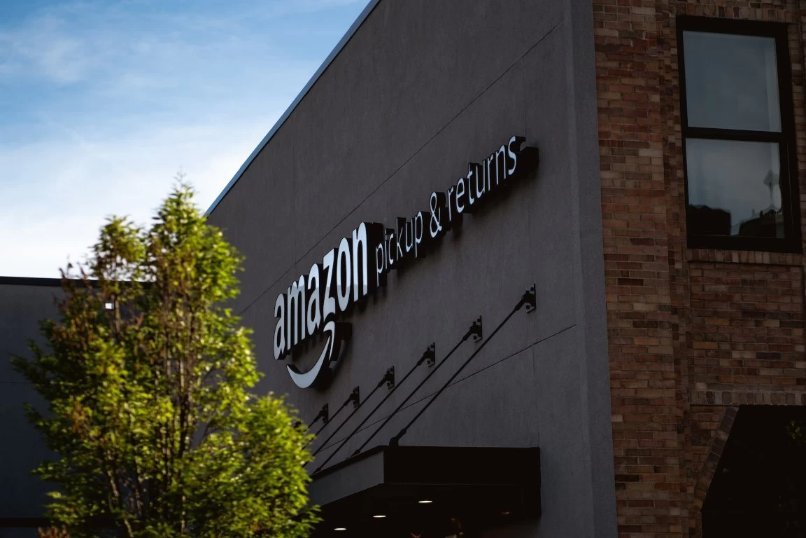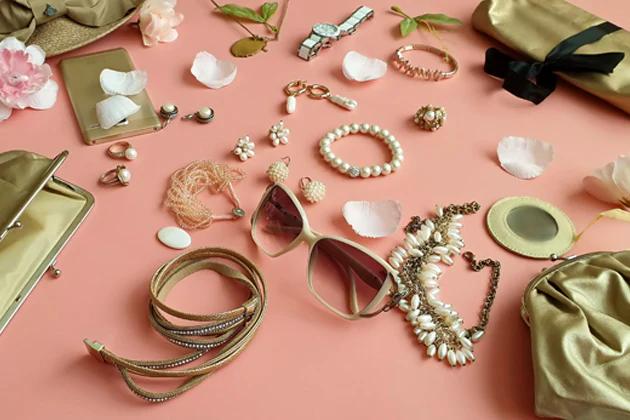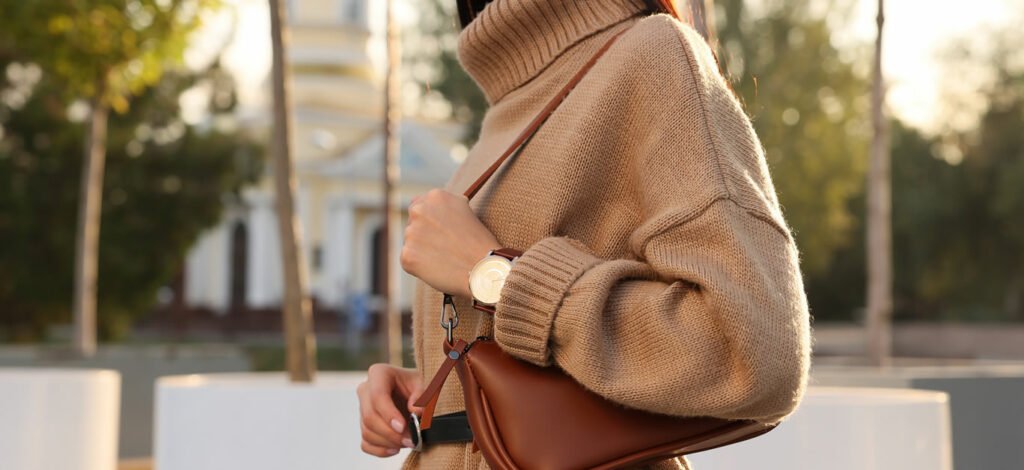Hey there, if you’re anything like me a few years back—staring at a drawer full of mismatched earrings and belts, dreaming of turning that chaos into cash—you’re in the right spot. I remember the day it hit me: why not open a retail business for accessories? Not just any store, but one packed with trendy handbags, statement necklaces, and those quirky scarves that make outfits pop. It started as a weekend flea market gig, selling vintage-inspired pieces I’d sourced from estate sales. Fast-forward to today, and my little boutique, Sparkle Haven, is thriving in a bustling downtown spot. But getting here? It was a mix of thrills, spills, and a whole lot of learning. In this guide, I’ll walk you through how to start your own accessories retail business, from the first sketchy business plan to flipping that “Open” sign. Let’s dive in—because trust me, if a former graphic designer like me can do it, so can you.
Why Start an Accessories Retail Business Right Now?
Picture this: the fashion world is buzzing with personalization. In 2025, consumers aren’t just buying stuff—they’re curating identities. Accessories? They’re the secret sauce, turning a basic tee into a vibe. With the global fashion accessories market projected to hit $500 billion by 2027, it’s no wonder small retailers are jumping in. Low entry barriers mean you can start lean, whether it’s a pop-up kiosk or an online-first setup. But it’s more than numbers; it’s about passion. I launched mine during a post-pandemic glow-up when everyone craved affordable joy. If you’re eyeing how to open a retail store for fashion accessories, know this: it’s flexible, fun, and full of feel-good wins—like watching a customer light up over a $20 bag that completes their look.
Step 1: Nail Down Your Niche and Business Plan
Choosing your slice of the accessories pie is like picking your signature scent—personal and pivotal. Are you all about eco-friendly leather goods, boho jewelry, or tech-savvy phone charms? I zeroed in on sustainable, mid-range pieces after spotting a gap in local thrift vibes mixed with modern twists. Your business plan? It’s your roadmap, not a novel. Outline goals, target crowd (say, urban millennials craving quick style fixes), and rough finances. Tools like free templates from the Small Business Administration make it painless. Skip the fluff; focus on what sets you apart. Mine? Storytelling tags on every item, turning buys into backstories.
What Makes a Winning Accessories Niche?
Go beyond “jewelry”—think “vegan leather totes for remote workers.” Research via Google Trends or Etsy searches reveals hot spots like “personalized keychains” (up 40% year-over-year). Validate with a quick survey on Instagram Stories; I did, and 70% of responses screamed for customizable options. This isn’t guesswork—it’s your edge in a sea of sameness.
Crunching the Startup Costs: What to Expect in 2025
Buckle up; numbers can sting, but transparency is key. On average, launching an accessories retail business runs $10,000 to $50,000, depending on if you’re brick-and-mortar or hybrid. I bootstrapped with $15k—half on inventory, the rest on fixtures and a basic POS. Here’s a breakdown to keep you grounded:
| Cost Category | Estimated Range | My Real-Talk Tip |
|---|---|---|
| Inventory (initial stock) | $5,000–$20,000 | Start small; source from wholesalers like Alibaba for bulk deals under $2k. |
| Lease/Setup (rent deposit, renovations) | $2,000–$15,000 | Pop-ups save here—mine cost $800/month vs. $3k for full storefront. |
| POS & Tech (software, hardware) | $500–$2,000 | Shopify POS at $89/month was a game-changer; integrates everything. |
| Marketing (website, social ads) | $1,000–$5,000 | Free tools like Canva for visuals; I spent $500 on targeted Facebook boosts. |
| Licenses & Insurance | $300–$1,000 | LLC filing via ZenBusiness for $0 + fees—peace of mind. |
| Miscellaneous (signage, fixtures) | $1,000–$3,000 | Thrift shelves; I scored vintage displays for $200 on Facebook Marketplace. |
Total? Aim low if you’re testing waters. Pro tip: Track every penny with QuickBooks—saved me from early overdraft drama.
Finding Suppliers: Where to Source Your Sparkle
Sourcing is the heartbeat of your store—get it wrong, and you’re stuck with dusty stock. I learned the hard way after a dud batch of tarnishing earrings. Start with wholesalers: Faire for indie makers, IndiaMart for affordable imports. For U.S.-based, check Wholesale Accessory Market. Aim for 50-100% markup; my scarves cost $3, sell for $12. Build relationships—attend trade shows like Atlanta Market. Hybrid tip: Mix dropshipping via Oberlo for low-risk testing. Quality over quantity; customers sniff out cheap fakes faster than a bad perfume sample.
Pros and Cons of Wholesale vs. Dropshipping
Weighing options? Here’s the scoop:
Wholesale Pros:
- Control over quality and branding.
- Better margins (up to 60%).
- Faster shipping for in-store feels.
Wholesale Cons:
- Upfront cash tie-up.
- Storage headaches.
- Risk of overstock.
Dropshipping Pros:
- Zero inventory costs.
- Easy scaling.
- Test trends without commitment.
Dropshipping Cons:
- Supplier dependency (delays kill vibes).
- Lower margins (30-40%).
- Less brand uniqueness.
I went 70/30 wholesale/dropship—best of both worlds.
Picking the Perfect Location: Bricks, Clicks, or Both?
Location isn’t just an address; it’s your silent salesperson. For physical, scout high-foot-traffic spots like malls or trendy strips—my downtown corner sees 200 passersby hourly. Rent? $20–$50/sq ft in 2025. Online? Shopify’s $29/month plan turns your laptop into a global storefront. Hybrid wins: Use your site for broader reach, store for tactile try-ons. I started online-only, added bricks after six months of $2k/month sales. Scout via LoopNet for leases; factor demographics—near offices for lunch-hour impulse buys.
Legal Setup: Don’t Skip the Boring Bits
Bureaucracy blues? Yeah, me too. Form an LLC for liability shield—costs $100–$500 via LegalZoom. Get a seller’s permit for sales tax (state-specific; check your revenue dept). EIN from IRS is free. Insurance? General liability runs $500/year—covers slip-and-falls over spilled sequins. I skimped once; a minor theft claim taught me quick. Consult SCORE mentors for free guidance. It’s unsexy, but it keeps your dream lawsuit-free.
Building Your Brand: From Logo to Loyalty
Branding is your store’s soul. I doodled my logo on a napkin—curvy script with a tiny gem—then polished it in Canva. Name? Something memorable like “Glimmer Grove.” Website via Squarespace ($12/month) with pro photos (hire a local for $300). Socials: Instagram reels of styling tips hooked my first 1k followers. Email lists via Mailchimp—free tier blasts promos. Emotional hook? Share your why; mine’s empowering everyday glam. Light humor: “Because who has time for boring bags?”
Marketing Magic: Drawing in the Crowds
No buzz, no bucks. Start with freebies: User-generated content contests (#MySparkleLook). Paid? $5/day Facebook ads targeting “fashion lovers near [your city].” SEO? Pepper product pages with long-tails like “affordable boho necklaces online.” Partnerships: Collab with local influencers for shoutouts—I traded a bag for a post, gained 500 followers. Grand opening? Free bubbly and 20% off; mine pulled 150 in day one. Track ROI with Google Analytics—tweak what works.
Best Tools for Retail Accessories Marketing
Gear up with these transaction-ready picks:
- Shopify: All-in-one for e-comm, $29/month.
- Canva Pro: Visuals on steroids, $12.99/month.
- Hootsuite: Social scheduling, free basic.
- Google My Business: Local SEO freebie—claim it yesterday.
Hiring Help: When to Bring in the Team
Solo at first? Fine, but scale smart. I hired my first part-timer at $15/hour after month three—covers weekends. Look for retail vets via Indeed; train on customer schmoozing. Pros: Fresh eyes, coverage. Cons: Payroll bites (use Gusto, $40/month base). Culture matters—perks like staff discounts build loyalty. Funny fail: My newbie once rang up a $200 bag as $2; we laughed, learned, and comped it.
Launch Day and Beyond: Keeping the Momentum
Ribbon-cutting jitters? Normal. Stock up, playlist ready (upbeat indie), signage crisp. Post-launch: Weekly inventory audits via Square. Measure success: Aim for 20% repeat rate month one. Pivot fast—my slow-selling hats became bundle deals. Long-game: Loyalty apps like Smile.io reward repeats. Remember my early flop? Overstocked gold chains; donated half, wrote off the rest. Resilience is your accessory.
Pros and Cons of Opening an Accessories Retail Store
Weighing the leap? Here’s the unvarnished truth, pulled from my trenches and chats with fellow owners.
Pros:
- High Margins: 50-70% on accessories—beats apparel’s slim cuts.
- Impulse Heaven: Small-ticket items ($10–$50) drive quick sales.
- Trendy Flexibility: Swap stock seasonally; low commitment.
- Personal Touch: Build raves via styling chats—loyalty gold.
- Scalable Joy: Start pop-up, grow to empire.
Cons:
- Inventory Roulette: Trends tank fast; leftovers sting.
- Competition Crush: Big-box and Etsy swarm the field.
- Overhead Oof: Rent/utilities eat 20-30% profits early.
- Seasonal Slumps: Post-holiday blues hit hard.
- Staff Shenanigans: Turnover’s real—train ’em quick.
Balance? Lean into passions; the wins outweigh the woes.
Comparison: Physical Store vs. Online-Only Accessories Retail
Stuck on format? Compare these models for your setup:
| Aspect | Physical Store | Online-Only |
|---|---|---|
| Startup Cost | $20k+ (lease heavy) | $2k–$5k (digital light) |
| Customer Reach | Local foot traffic | Global via SEO/ads |
| Experience | Hands-on try-ons | Photos/reviews key |
| Overhead | High (rent/staff) | Low (no utilities) |
| Scalability | Slower expansion | Instant worldwide |
| Personal Vibe | In-person charm | Virtual storytelling |
Hybrid’s my rec—online tests, store cements.
People Also Ask: Real Questions from Aspiring Owners
Pulled straight from Google’s PAA for “how to start an accessories store”—these hit home.
How much does it cost to start an accessories business?
Expect $10k–$50k, but bootstrap with $5k via online focus. Factor inventory (40%), setup (30%), marketing (20%). I stretched $15k over six months—sustainable wins.
What is the best location for an accessories store?
High-traffic hubs like malls or urban strips with your demo (e.g., near cafes for 20-somethings). Online? Everywhere. My spot near a yoga studio? Serendipity—walk-ins galore.
How do I find suppliers for fashion accessories?
Wholesalers like Faire or Alibaba for starters; trade shows for gems. Vet samples—durability first. I built a rolodex of five reliable ones; variety keeps it fresh.
Can I start an accessories business with no experience?
Absolutely—passion trumps pedigree. I had zilch in retail; devoured podcasts like “The Business of Fashion.” Network via Reddit’s r/smallbusiness; trial runs at markets build grit.
What are common mistakes in starting a retail accessories store?
Overbuying trends (guilty!) or skimping on branding. Fix: Start small, listen to feedback. My biggie? Ignoring social proof—reviews now drive 60% traffic.
FAQ: Your Burning Questions Answered
Got queries? These crop up in my DMs weekly—straight talk ahead.
How long until my accessories store turns profitable?
3–6 months if lean; 12 for bricks. Track KPIs like $300/sq ft sales annually. Mine hit break-even at month four with pop-ups.
What’s the best POS for a small accessories shop?
Square for simplicity ($0 hardware) or Lightspeed for inventory smarts ($69/month). Integrates with Shopify—seamless for hybrids.
How do I handle seasonal trends in accessories retail?
Curate capsules: Summer straws, winter velvets. Use data from Google Trends; rotate 20% stock quarterly. Fun twist: Themed events keep it lively.
Should I go wholesale or handmade for my startup?
Mix: Handmade for uniqueness (higher price), wholesale for volume. I did 60/40—builds cred without burnout.
How to market a new accessories store on a budget?
UGC gold: Customer pics for reposts. TikTok hauls under $100/ad. Partner locals—win-win exposure.
Whew, we’ve covered the glitter and grind. Opening my accessories retail business wasn’t a straight catwalk—there were stumbles, like that time a shipment arrived late, leaving shelves bare during a heatwave sale. But the rush of a stranger’s “This is perfect!”? Priceless. You’ve got the blueprint; now lace up those entrepreneurial boots. What’s your first move—niche brainstorm or supplier scout? Drop a comment; let’s chat. Here’s to your store sparkling brighter than the gems inside.



